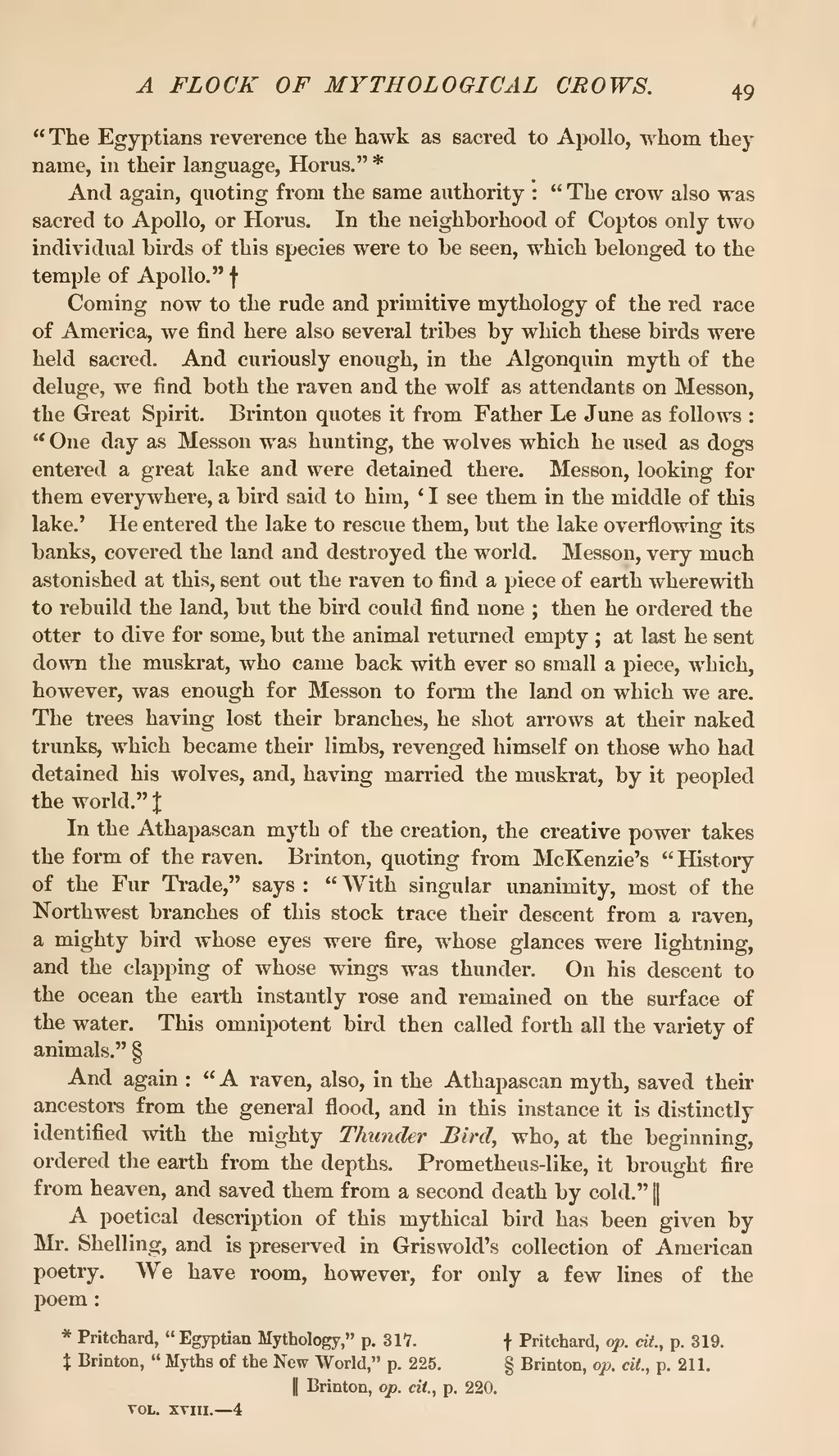"The Egyptians reverence the hawk as sacred to Apollo, whom they name, in their language, Horus."[1]
And again, quoting from the same authority: "The crow also was sacred to Apollo, or Horus. In the neighborhood of Coptos only two individual birds of this species were to be seen, which belonged to the temple of Apollo."[2]
Coming now to the rude and primitive mythology of the red race of America, we find here also several tribes by which these birds were held sacred. And curiously enough, in the Algonquin myth of the deluge, we find both the raven and the wolf as attendants on Messon, the Great Spirit. Brinton quotes it from Father Le June as follows: "One day as Messon was hunting, the wolves which he used as dogs entered a great lake and were detained there. Messon, looking for them everywhere, a bird said to him, 'I see them in the middle of this lake.' He entered the lake to rescue them, but the lake overflowing its banks, covered the land and destroyed the world. Messon, very much astonished at this, sent out the raven to find a piece of earth wherewith to rebuild the land, but the bird could find none; then he ordered the otter to dive for some, but the animal returned empty; at last he sent down the muskrat, who came back with ever so small a piece, which, however, was enough for Messon to form the land on which we are. The trees having lost their branches, he shot arrows at their naked trunks, which became their limbs, revenged himself on those who had detained his wolves, and, having married the muskrat, by it peopled the world."[3]
In the Athapascan myth of the creation, the creative power takes the form of the raven. Brinton, quoting from McKenzie's "History of the Fur Trade," says: "With singular unanimity, most of the Northwest branches of this stock trace their descent from a raven, a mighty bird whose eyes were fire, whose glances were lightning, and the clapping of whose wings was thunder. On his descent to the ocean the earth instantly rose and remained on the surface of the water. This omnipotent bird then called forth all the variety of animals."[4]
And again: "A raven, also, in the Athapascan myth, saved their ancestors from the general flood, and in this instance it is distinctly identified with the mighty Thunder Bird, who, at the beginning, ordered the earth from the depths. Prometheus-like, it brought fire from heaven, and saved them from a second death by cold."[5]
A poetical description of this mythical bird has been given by Mr. Shelling, and is preserved in Griswold's collection of American poetry. We have room, however, for only a few lines of the poem:

